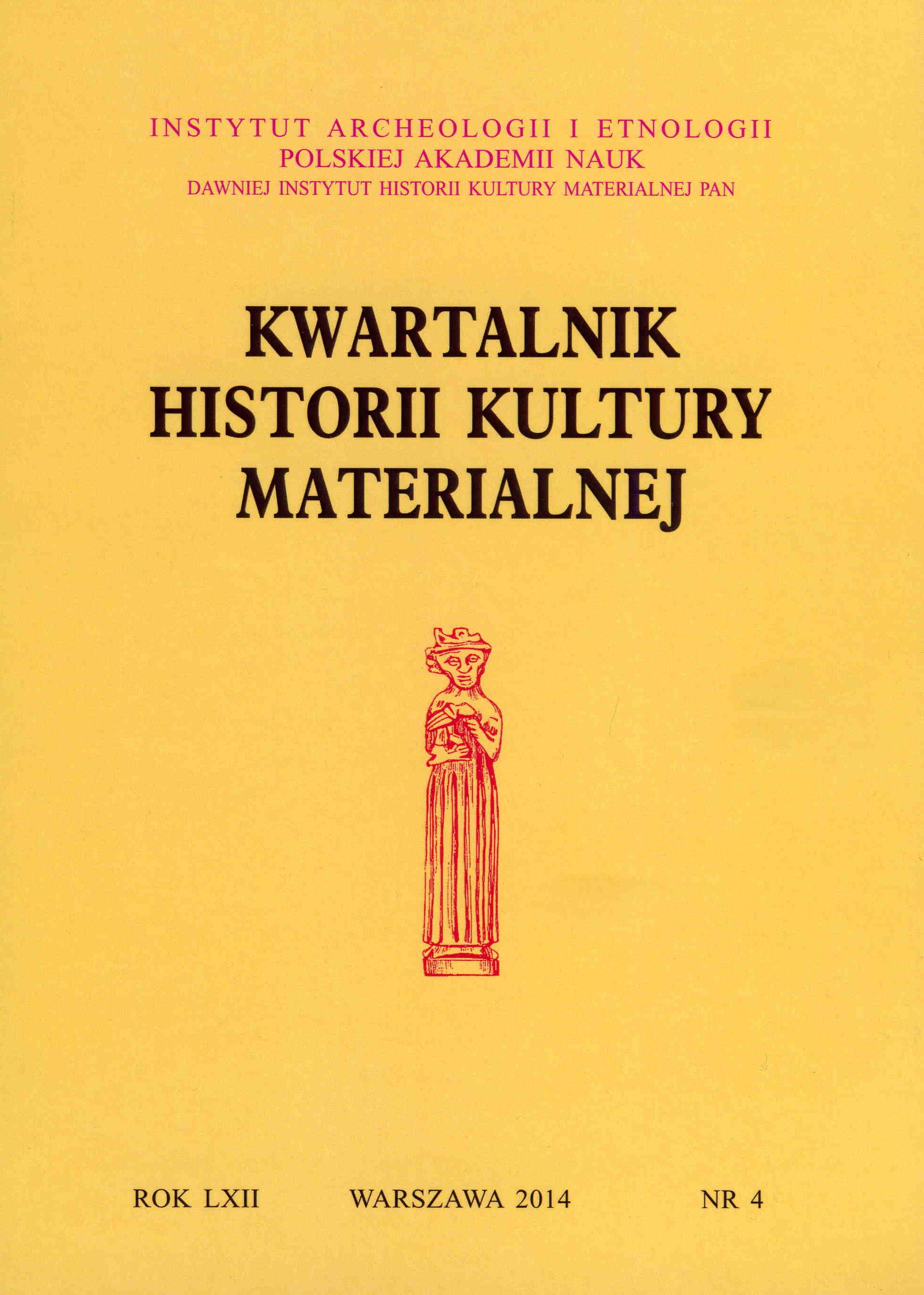Another anthropomorphic mediaeval hilt excavated in Poland
Keywords:
Middle Ages -- Poland, mediaeval hilt, anthropomorphic hiltsAbstract
In 2000 a well-preserved anthropomorphic knife hilt made of a rib bone was excavated during archaeological works in the old Town of Cieszyn (fig. 1). It is the tenth fi nd of this kind in Poland, dated provisionally to the 13th–14th century. All together 140 artefacts of this type have been found in Western and central Europe, Northern Italy, Great Britain, Scandinavia and the Baltic countries. The hilt is an image of a standing man, wearing a long loose robe, with a falcon on his right arm, feeding the bird with his left hand. He has a falconers’ bag attached to his belt; such a bag is also visible in three other fi nds (Szczecin I, Hamburg, Cirencester: fig. 5). He is wearing a headscarf tied on the left hand side, a detail visible in some other similar hilts (Schwerin, Riga, Angers, Scania). Contrary to some researchers’ claims, it is an element of man’s not of women’s dress, as is proved by a miniature from Codex Manesse and by a hilt from Paris, showing a man and a women, in which such headgear is worn by the man (fig. 4). The article discusses research questions connected with this type of hilts, their typology, dating and functions, and the symbolism of the images.
Downloads
References
Błaszczyk W. 1982. Będzin przez wieki. Poznań.
Cooper J.C. 1998. Zwierzęta symboliczne i mityczne. Poznań.
Faust W. and Soeters G.C. 1997. Handelsstadt und Bischofssitz. Archäologische Untersuuchung zwiischen Dom und Markt in Fürstenwalde. Landkreis Oder-Spree. Archäologie in Berlin und Brandenburg.
Gasser C. 1995. Messergriff mit Falkenerdarstellung. In: Eines Fürsten Traum. Meinhard II. Das Werden Tirols. Tiroler Landesausstelung 1995. Schloss Tirol, 205.
Holtmann G.W.F. 1993. Untersuchung zu mittelalterlichen uund frühneuzeitlichen messern. Gőttingen.
Kobielus S. 2005. Fizjologii i Aviarum. Średniowieczne traktaty o symbolice zwierząt. Tyniec.
Kowalczyk-Heyman E. 2010. Anthropomorph verzierte mittelalterliche Messergriffe in Polen. Questiones Medii Aevi Novae 15, 241-282.
Kuś W. 2005. Cieszyn. In: E. Tomczak (ed.), Skarby ziemi wydarte. Górny Śląsk i pogranicze. Katowice.
Leciejewicz L. 1974. O pochodzeniu rogowej rzeźby ze Wzgórza Zamkowego w Szczecinie. Studia Archaeologica Pomeranica, 184-185.
Leciejewicz L. and Wesołowski S. 1983. Wymiana handlowa. In: E.Cnotliwy and L. Leciejewicz et al., Szczecin we wczesnym średniowieczu. Wzgórze Zamkowe. Wrocław.
Marcinkowski M. 2003. Wyroby z kości i poroża w średniowiecznym Elblągu. In: T.Galińskki, E. Wilgocki (eds.), Res et fontes. Księga jubileuszowa dr Eugeniusza Cnotliwego. Szczecin.
Mazaraki M. 1977. Z sokołami na łowy. Warszawa.
Polak Z. 2004. Rękojeść noża z Pułtuska. Spotkania z Zabytkami 28, 36.
Połczyński Z. 1990. Figurka kościana z terenu dawnego kościoła dominikanów w Toruniu. Zapiski Historyczne 55, 89-104.
Samsonowicz A. 2000. Łowiectwo – praca, zabawa, obyczaj. In: W. Iwańczak and K. Bracha (eds.), Człowiek i przyroda w średniowieczu i we wczesnym okresie nowożytnym. Warszawa.
Sommer P. 1981. Střenka ve tvaru sokolnika z Vysokeho Myta. Praehistorica 8, 315-318.
Tresidder J. 2001. Symbole i ich znaczenie. Warszawa.
Ulbricht I. 1984. Die Verarbeitung von Knochen, Geweih und Horn im mittelalterichen Schleswig. In: Ausgrabungem in Schleswig. Berichte und Studien 3, 61.
Wachowski K. 2013. Emblemata mediaevalia profana. Przykład Polski. Wrocław.
Westholm G. 2000. Visby. Lifestyle und Luxory. In Lübecker Kolloqium zur Stadtarchäologie im Hanseraum . Lübeck, 657-658.
Downloads
Published
How to Cite
Issue
Section
License

This work is licensed under a Creative Commons Attribution-NonCommercial-NoDerivatives 4.0 International License.


 Publication co-financed by the Ministry of Science and Higher Education under the program "Support for scientific journals 2019-2020"
Publication co-financed by the Ministry of Science and Higher Education under the program "Support for scientific journals 2019-2020"










